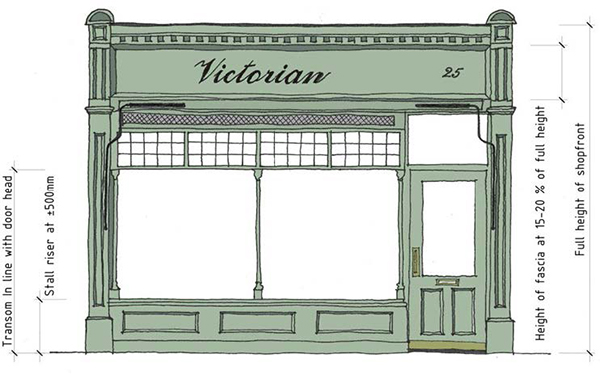4.1. Street Composition And The Public Realm
While the design of individual shopfronts is crucial, it is also important to take into consideration the design of a shopfront in relation to others along a commercial street. The following diagrams highlight good and bad practices.

An example of a group of shopfronts with poorly designed proportions

An example of harmonious shopfront proportions across a row of shops

Shown above are some general, recommended proportions for shopfront design based on local precedent
What do we mean by Proportionality?
Proportionality is the balance between different elements of the whole picture. In this case, the whole picture is the building frontage. Proportional design aims to achieve visual consistency. In simple terms, when things look balanced, humans like it. Knowing what is and is not proportional can mean relying on your senses. Sometimes building frontages just ‘feel off’ because their proportions are not well balanced.
Tools such as the Golden Ratio can be helpful for understanding proportionality. This is a ratio within the elements of a form, such as height to width, at approximately 0.618. In terms of commercial frontages, ensuring that no part of a shopfront feels much too large or much too small is a good start. Looking at examples of quality shopfronts that date from the same time period as your own will help.
What do we mean by Frontage?
A frontage of a building is a wall facing a public place. In this context, the building frontages are facing onto the High Street or public squares. The frontage covers both the shopfront and the upper storeys of the building. It refers to everything you can see as you look at a shop from the street as a pedestrian. Another term for frontage is fa ade, which refers to the front exterior of a building.





